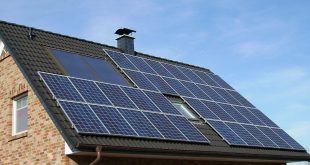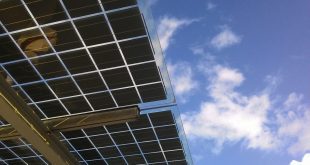The EPA reports that 36 percent of total energy use and 65 percent of electricity consumption comes from buildings. When these numbers approach 0, mankind will have taken a major step towards fossil fuel independence. Exciting new green energy technologies are leading us towards a promising future at a more rapid pace than many have imagined. Recent developments in solar technology, especially PV Windows are very promising.
Green Biz News suggests that future green buildings will follow a net zero energy consumption strategy. Net-zero buildings produce the same amount of energy as they use, requiring investments in both energy efficiency measures and in renewable energy generation. As the green buildings movement develops, newer venture capital investments will center on startups that make net-zero operations possible. Garbage companies are valuable contributors to the recycling and energy saving process, especially when dealing with construction waste.
Lux Research reports that over $4 billion in early venture capital for green buildings has been in the reduction of energy consumption. Numerous technologies and materials have contributed to this endeavor from energy monitoring applications to sustainable construction materials and energy efficient lighting. Venture capitalists are also investing in garbage companies to provide energy from recycled waste products. Close to half of 2011 energy investments or $445 million is going towards renewable energy generation.
North American Venture Capital Has Contributed Most to Green Building Funds
Venture capitalists have provided 77% of green building funds or $3.1 billion to North American startups. Asia-Pacific green building companies netted $484 million since 2007, while Europe raised $412 million since 2002. Israel received $35 million in VC since 2006. Much or this capital went toward solar energy and solar heating.
New Construction Technologies
PV Windows can turn buildings into substantial power producers. Pythagoras is one manufacturer producing an insulated window integrated with photovoltaic technology. The company has a pilot project on the 56th floor of Willis Tower (formerly Sears Tower) on the south side. If the pilot succeeds, Willis Tower may be able to produce up to two megawatts of solar energy.
MIT Technology Review’s David Zax talks about this tremendous manufacturing breakthrough in PV windows. This new technique was discovered by New Energy Technologies, a solar energy startup. Their plan is to lower production costs by increasing production speed. Their technology uses an organic solar array composed of tiny solar cells ¼ the size of a grain of rice. This material is highly effective and is capable of collecting light from even a northern exposure.
Such major technological developments should enable Americans to get ahead in the international competition for better and cheaper solar products. The film can be sprayed on in extremely thin layers less than a micrometer in thickness. With spray on technology, energy can be harvested almost anywhere.
Inside Climate News reports on one of Brooklyn greenest building s in terms of net zero energy efficiency. The Delta Building uses solar energy and architectural structure to minimize energy use and maintain a comfortable climate within the building. There is an empty space behind the building’s exterior layer that is 1.5 inches thick. It is followed by cinder blocks and insulation. The layered exterior reduces summer heat and winter cold. Double-pane windows tightly sealed with rubber also control temperature.
Water is heated with a hybrid electric/solar powered system. The Delta cost about 25 percent more to build than a similar building without green technology. However, it is expected that the energy efficiency upgrades will pay for themselves in less than four years. Hopefully those who are planning new buildings will hear about this project and strive to emulate its success.
 Alternative Energy HQ solar power for homes, wind energy, and bio fuel issues
Alternative Energy HQ solar power for homes, wind energy, and bio fuel issues







